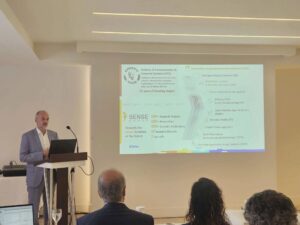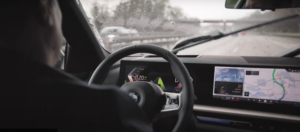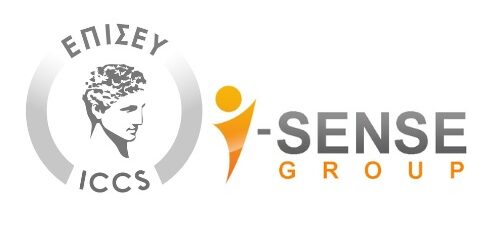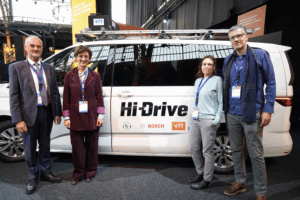The 2nd Hi-Drive Summer School, held on September 25–26 in Vouliagmeni, Greece, brought together 60 participants from across Europe to discuss the latest developments in automated driving (AD) technologies. Co-organised by the I-SENSE Group of ICCS, the event featured four sessions with 11 insightful presentations and seven research posters from up-and-coming scholars. Volkswagen Group’s Aria Etemad, coordinator of the Hi-Drive project, and Dr Angelos Amditis, director of the I-SENSE Group, inaugurated the two-day event, which centred on the most cutting-edge advancements in automated driving.
As proud partners of the Hi-Drive project and event co-organisers, our I-SENSE Group team was thrilled to witness the vibrant exchange of ideas and insights among participants from diverse fields and expertise. The enthusiasm and curiosity displayed throughout the event reaffirmed our commitment to fostering collaboration and knowledge-sharing in the fast-evolving realm of automated driving.
Key Insights from Hi-Drive Summer School 2024
The Hi-Drive Summer School 2024 offered profound insights into the complexities of AD technologies, with experts highlighting both technical advancements and human-centric considerations. Among the key takeaways was the recognition that driving behaviours and automation level definitions vary significantly across cultures, with Japan offering a distinct perspective. ASAM OSI was identified as a promising first step toward the standardisation of interoperable sensor models, while user prompts in multimodal foundation models demonstrated potential for improving predictions of other road users’ movements—a critical challenge for AD.
Cybersecurity and functional safety emerged as closely intertwined areas requiring parallel attention, while the robustness of deep learning models for situational awareness continues to demand further research. Experts also emphasised that testing prediction and planning modules for mixed-traffic scenarios necessitates sophisticated new simulation tools and safety metrics tailored to diverse road users.
Other advancements discussed included gated cameras, which are showing significant promise in poor weather conditions, and V2X-enabled functions, though the latter remain contingent on overcoming networking challenges. Driver gaze tracking was proposed as a powerful tool for better predicting transitions of control in autonomous systems, and standardized HMI elements were suggested as a way to improve user understanding of AD functionalities. Additionally, participants agreed on the urgent need for structured, interdisciplinary research to support teleoperation of autonomous vehicles. Moving forward, the focus will be on refining models, enhancing user acceptance through simulation-based training, and achieving human-like AV behaviour through more advanced interaction models. These efforts hold promise for the responsible deployment of AD/ADAS systems in the near future.
As the Hi-Drive Summer School 2024 ended, it was clear that the event offered invaluable insights into the future of automated driving, seamlessly blending technical progress with human-centred approaches.
All presentations will soon be available on the Hi-Drive website—stay tuned!












